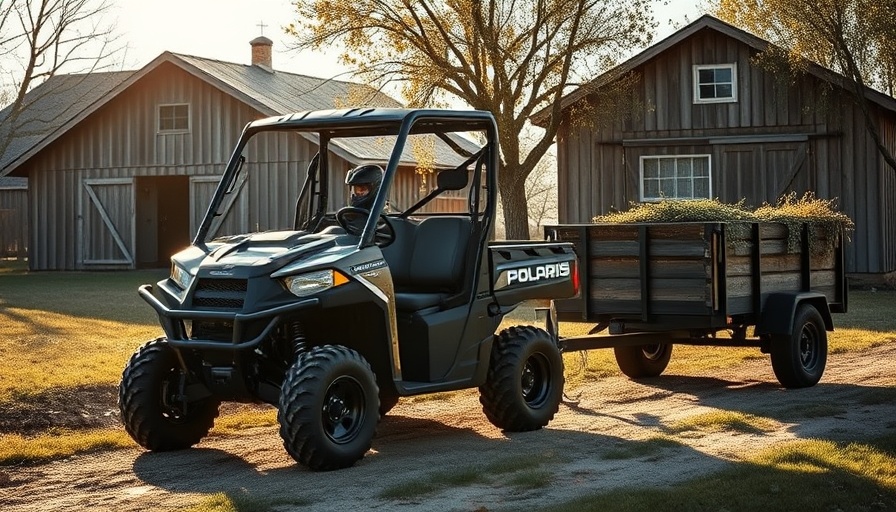
Revolutionizing Work with the New Polaris Ranger 500
The Polaris Ranger 500 has made its debut with a price tag of just $9,999, aiming to become a game-changer for both homeowners and contractors alike. Its compact size and robust features make it an invaluable asset for various outdoor tasks. Powered by a reliable 28-horsepower, 567-cc engine, this utility vehicle is designed to handle heavy lifting and tough conditions with ease.
Designed for Versatility and Efficiency
The Ranger 500 stands out not just for its affordability but also for its engineering that affords both efficiency and versatility. It features all-wheel drive with an auto-locking front drive, making it resilient even on rugged terrains. The selectable turf mode is an innovative addition that unlocks the rear differential for tighter, minimally damaging turns—a detail that is particularly beneficial for maintaining manicured lawns and sensitive work areas.
Unmatched Payload and Towing Capacity
With an impressive payload capacity of 1,000 pounds and a towing capacity of 1,500 pounds, the Ranger 500 easily accommodates practical tasks such as hauling supplies around a property or moving heavy equipment on job sites. In addition, the gas-assist dump box allows for easy and efficient unloading, further facilitating productivity on the job. The factory-installed winch, capable of pulling up to 2,500 pounds, adds another layer of utility, ensuring that this UTV is not merely a transport vehicle but a robust workhorse.
Enhanced Functionality with Additional Features
Polaris has packed the Ranger 500 with features tailored for everyday use. The model includes a versatile chassis-integrated plow mount plate, suitable for snow removal or dirt work, catering to proactive property maintenance. Standard features comprise a roof, LED headlights, and practical interior compartments, providing a blend of comfort and functionality.
Easy Maintenance for the DIY Enthusiast
For those who prefer a hands-on approach, the Ranger 500 simplifies maintenance with easy access to crucial components, such as the oil filter and air filter. These design choices enhance the DIY experience, allowing owners to keep their UTV running optimally without relying heavily on professional services. Moreover, a range of 30 different accessories, from windshields to enhanced lighting, allows customization tailored to individual needs—and further enhances user satisfaction.
Quick Connectivity and User-Friendly Technology
The Ranger's advanced 4-inch LCD information center provides essential machine metrics and programmable service intervals, ensuring that you are always aware of the vehicle’s condition and performance. From speed to fuel levels, everything you need to know is at a glance, which adds to the ease of managing your tasks effectively.
The 2026 Ranger Lineup: Future-Proofing Your Investment
Alongside the Ranger 500, Polaris has revitalized its Ranger lineup for 2026, featuring models that offer even enhanced durability and performance. The updated models, including the SP 570 and the rugged XP 1000, feature innovations like new tire designs for quieter operations and upgraded towing capabilities, ensuring that your UTV remains a reliable partner in your work for years to come.
Final Thoughts: Transforming Work Environments
The Polaris Ranger 500 is not just another UTV; it embodies a commitment to functionality and user-friendly design that benefits homeowners and contractors alike. Its affordability, coupled with its broad array of features, positions it as a preferred option for anyone looking to enhance their work efficiency without breaking the bank. Whether you're a DIY enthusiast or a professional contractor, consider adding the Ranger 500 to your lineup of essential tools.
 Add Row
Add Row  Add
Add 




Write A Comment